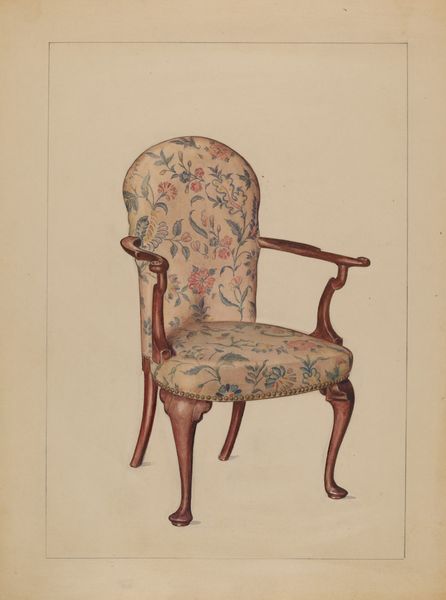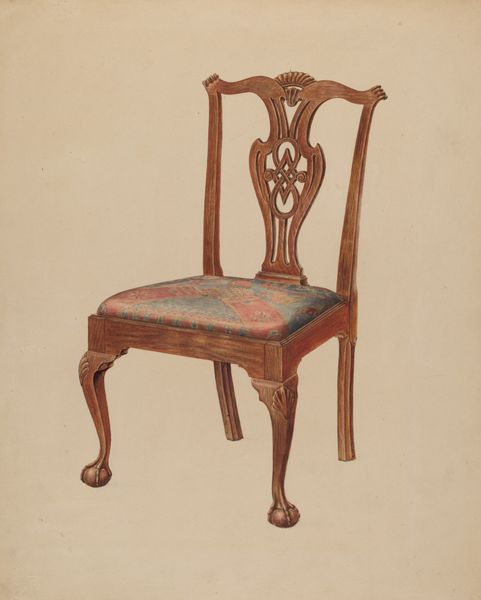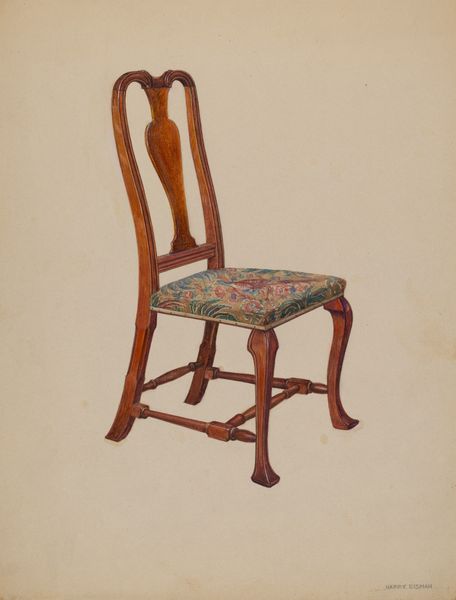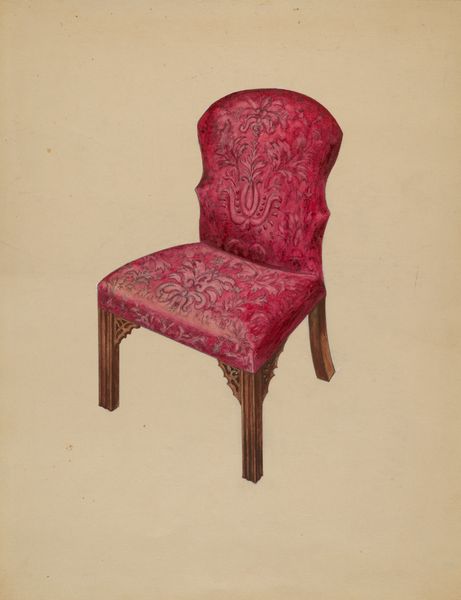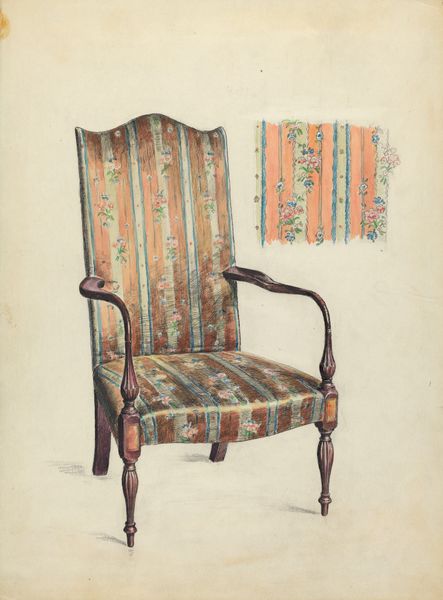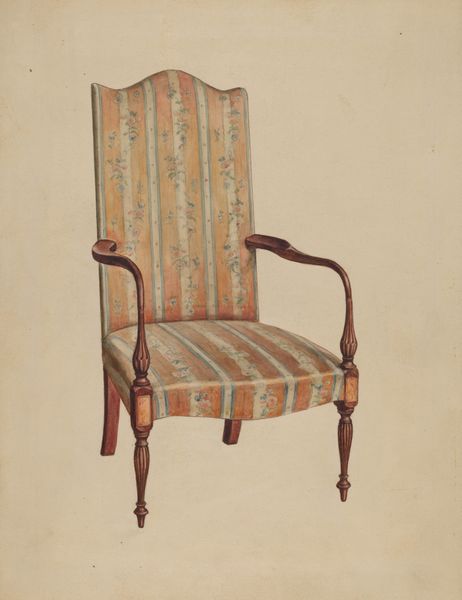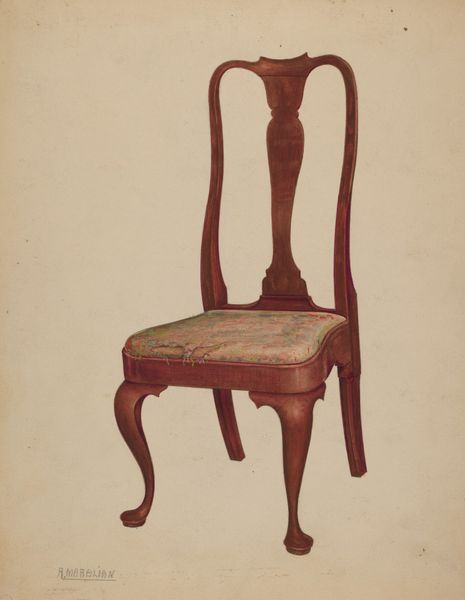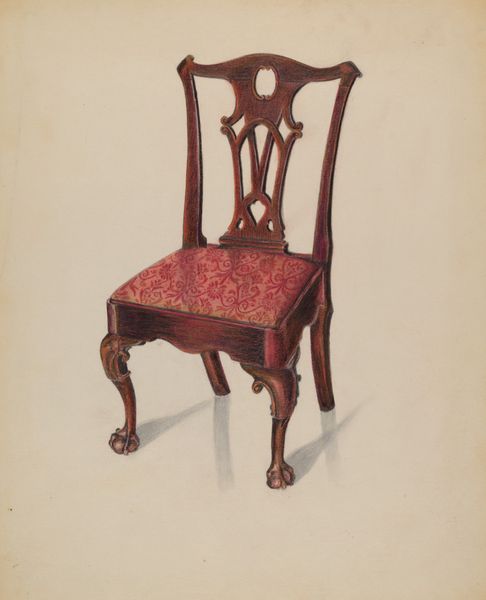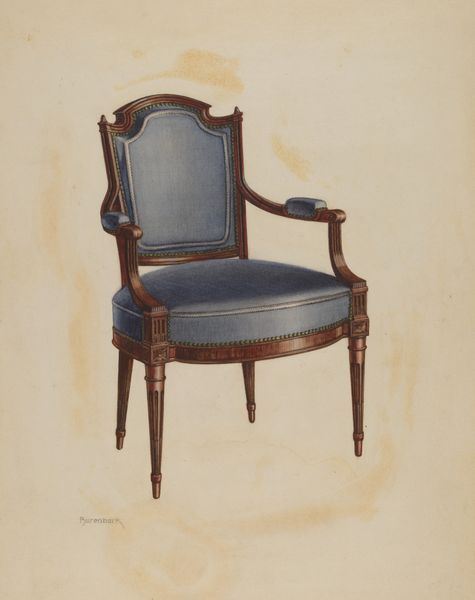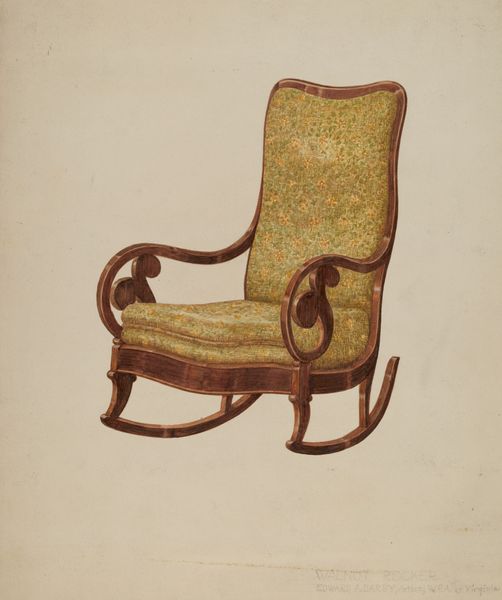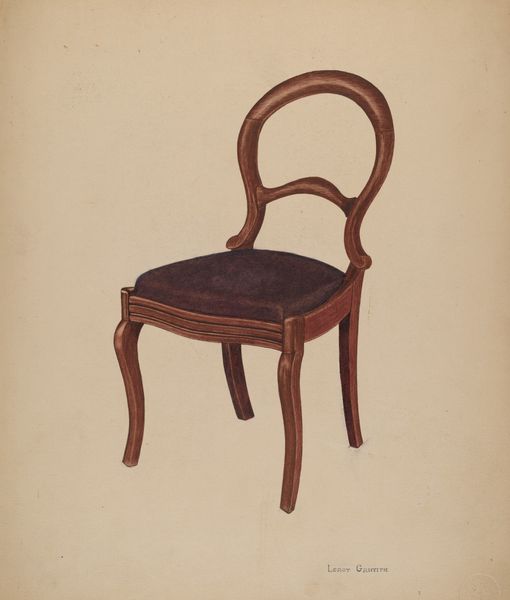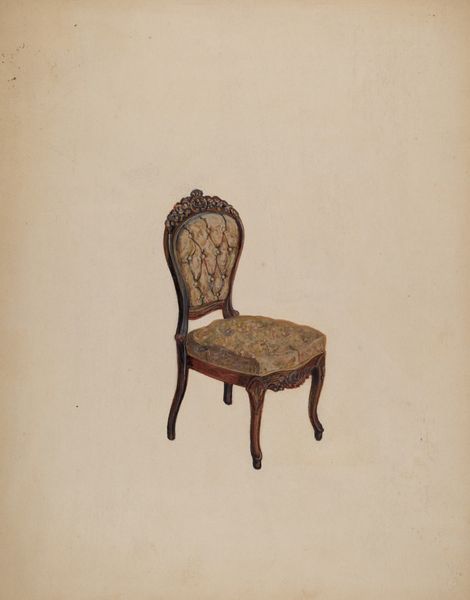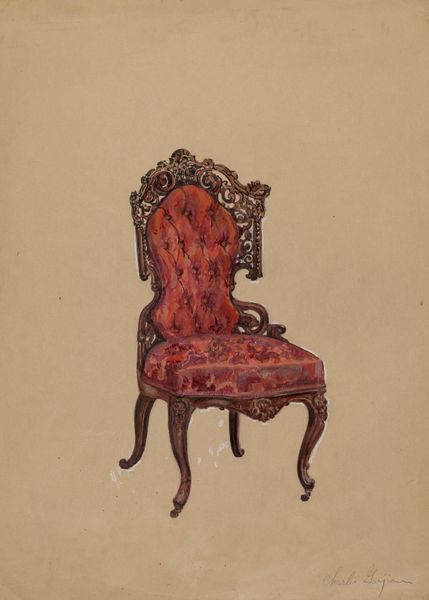
drawing, coloured-pencil, watercolor
#
portrait
#
drawing
#
coloured-pencil
#
water colours
#
watercolor
#
coloured pencil
Dimensions: overall: 29.3 x 23 cm (11 9/16 x 9 1/16 in.) Original IAD Object: 29cm high, 57 cm wide
Copyright: National Gallery of Art: CC0 1.0
Editor: Here we have Robert Brigadier's "Armchair," from around 1936, rendered with watercolor and colored pencil. It feels like such a straightforward depiction, but the patterns in the upholstery hint at something more. What catches your eye when you look at this piece? Curator: It’s precisely the relationship between representation and production that intrigues me. Brigadier wasn’t just creating a likeness; he was documenting a material object. Consider the means of this armchair’s construction – the carpentry for the frame, the textile mills producing the floral fabric. Were these processes local, or part of a global trade network? This object represents a whole network of labor and material. Editor: So, you’re thinking about where the chair comes from, literally? Like, who made the fabric and who assembled the wood? Curator: Exactly. This isn't just a drawing of a chair, it’s a depiction of the confluence of multiple manufacturing processes, reflecting 1930s consumer culture. Was Brigadier commenting on mass production through this careful rendering, or simply celebrating domesticity? The drawing itself becomes another layer of this production. Editor: I see what you mean. It’s not just about the final product, the armchair. It's about all the steps that had to happen to make it, and how those steps connect to society. Curator: Precisely. Even the choice of watercolor and colored pencil speaks to a certain kind of accessible, reproducible artistry, reflecting the materials available at the time. It reminds us that even seemingly simple objects have complex histories embedded within them. Editor: That definitely gives me a new perspective on how to look at art, especially pieces like this. Curator: Indeed. Examining materiality and modes of production provides valuable insight into the cultural context of any artwork.
Comments
No comments
Be the first to comment and join the conversation on the ultimate creative platform.
